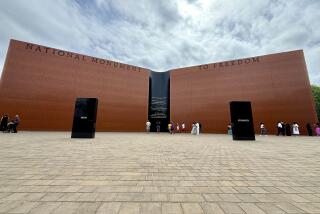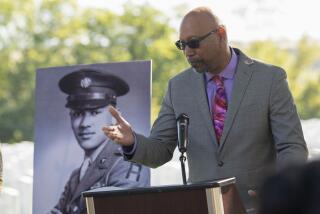Ceremony to Honor Black Fighter Pilots of WWII
Members of the Tuskegee Airmen, the famed World War II African American flying unit, will be on hand Sunday when the Lancaster City Council unveils a monument in their honor.
In keeping with a tradition of recognizing the achievements of aviators, the city has placed a 6-foot brick pillar with a bronze plaque in front of the Western Hotel Museum, 357 W. Lancaster Blvd., to mark the airmen’s place in history.
The 4:15 p.m. unveiling will be part of a public ceremony at the conclusion of daylong activities honoring the unit, including a 3 p.m. program at Lancaster High School.
The monument is part of the city’s Aerospace Walk of Honor, which celebrates achievements of aviators, including test pilots from Edwards Air Force Base.
The Rev. Henry Hearns, Lancaster’s vice mayor, proposed the idea for the monument aftermeeting some of the Tuskegee Airmen at a Highland High School Black History program last year.
The monument recognizes the battles for freedom fought abroad and at home by the “Red-Tailed Angels,” as they were called.
Racial segregation during World War II restricted the participation of African Americans in the military.
Under pressure from the black community, the military trained about 1,000 young black men as fighter pilots at a “separate but equal” Army Air Corps base near Tuskegee Institute in Alabama.
The fighter squadrons formed there were part of the 332nd Fighter Group, which flew more than 1,500 missions and shot down more than 400 enemy aircraft.
Although 66 Airmen died in combat and 33 became prisoners of war, they never lost a bomber aircraft to enemy fighters.
The Tuskegee Airmen monument ceremony will mark the close of Lancaster’s Black History Month celebration.
More to Read
Sign up for Essential California
The most important California stories and recommendations in your inbox every morning.
You may occasionally receive promotional content from the Los Angeles Times.










